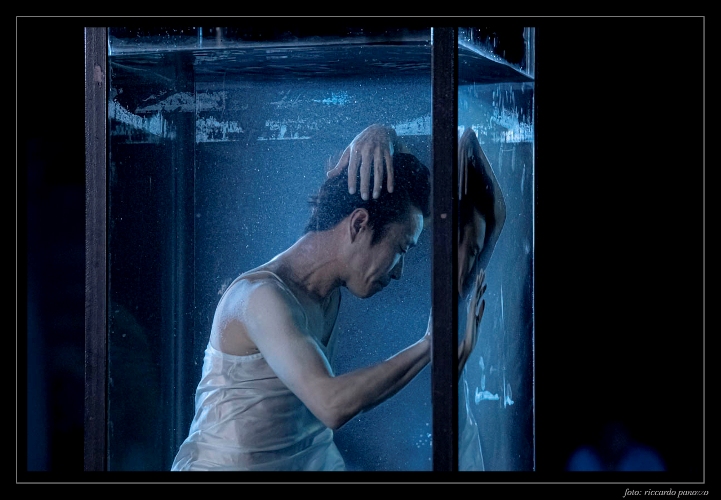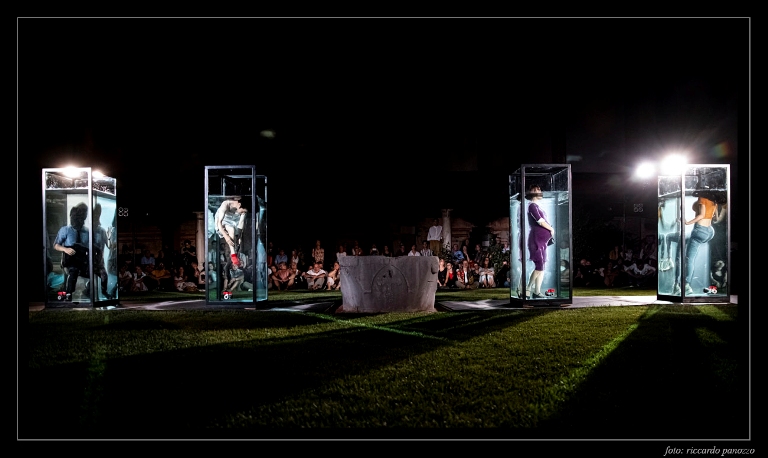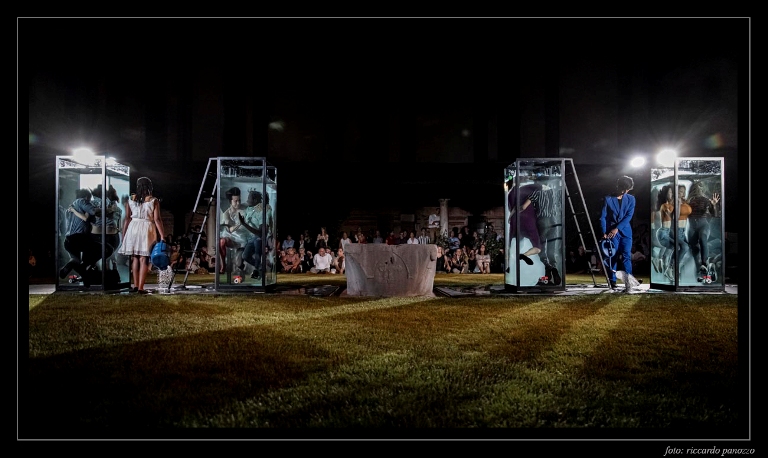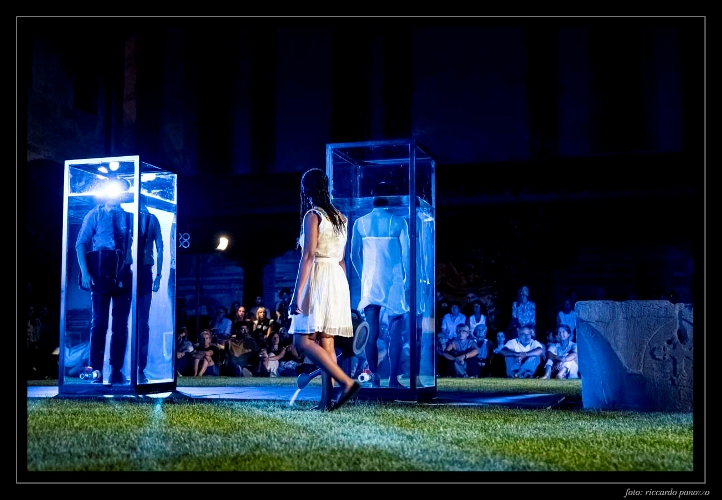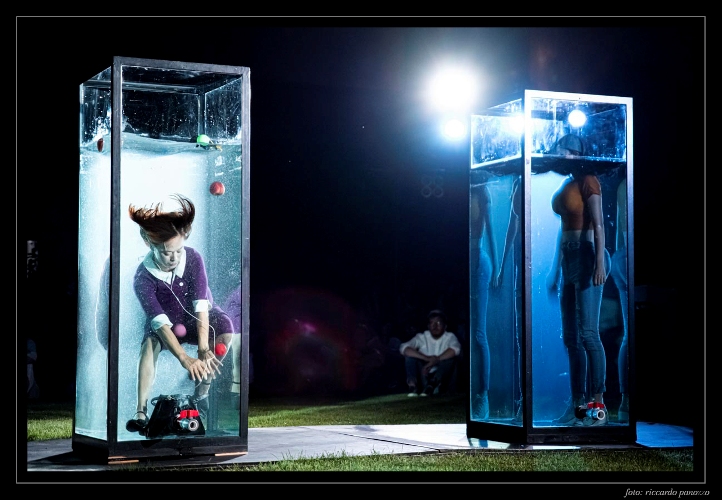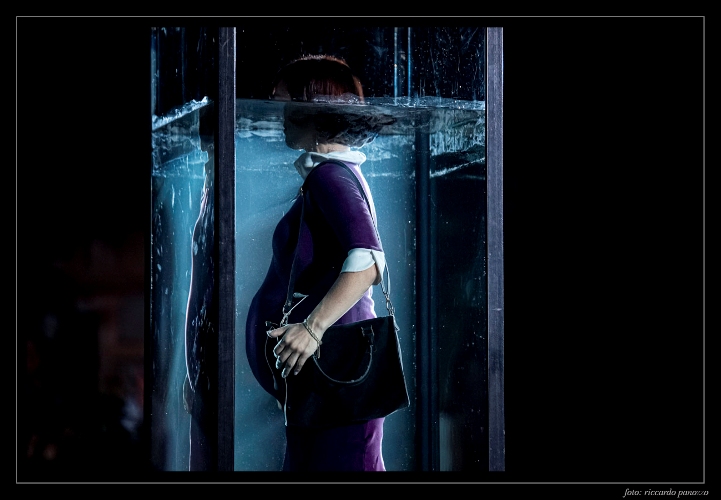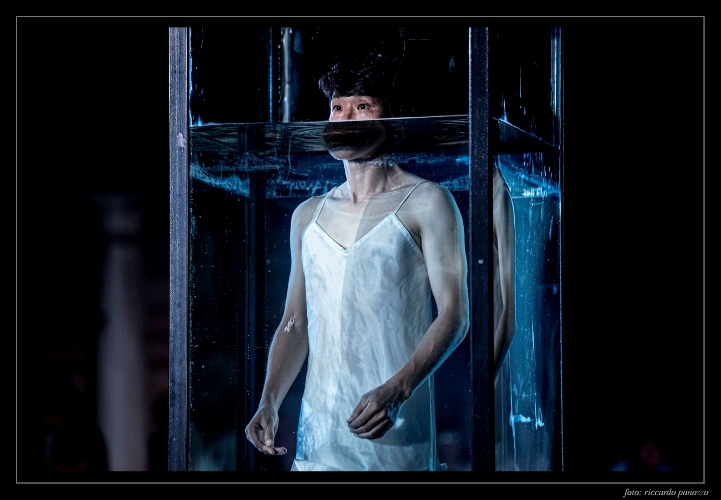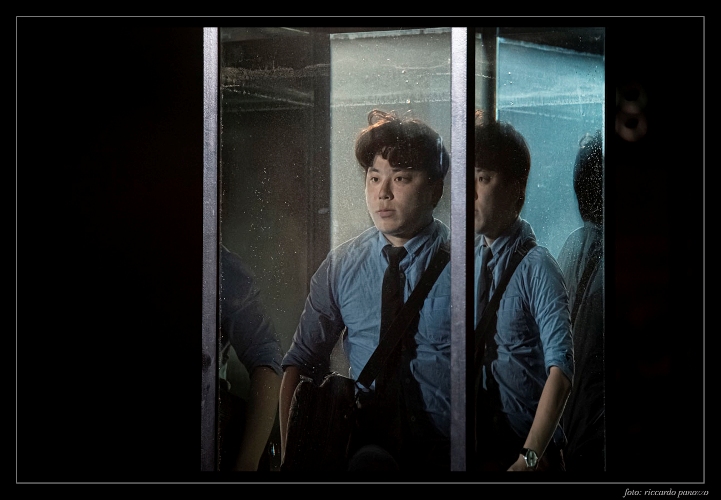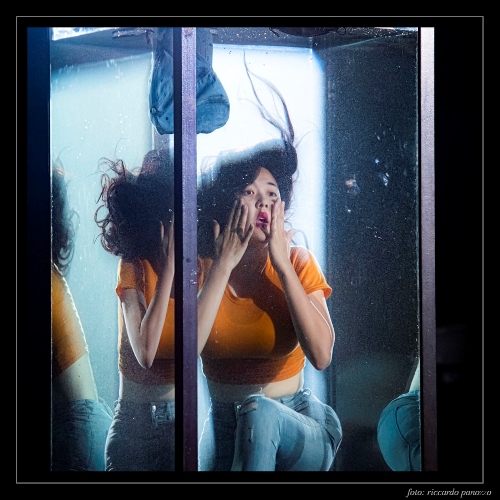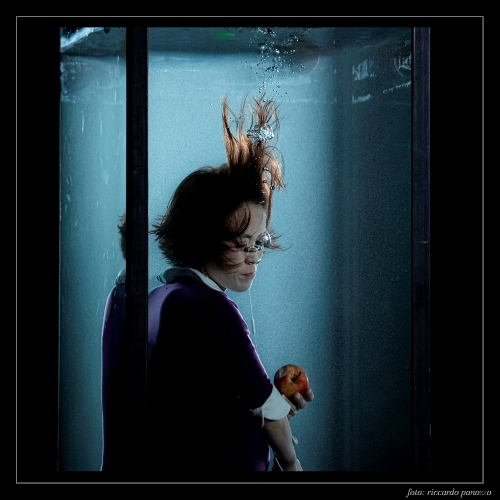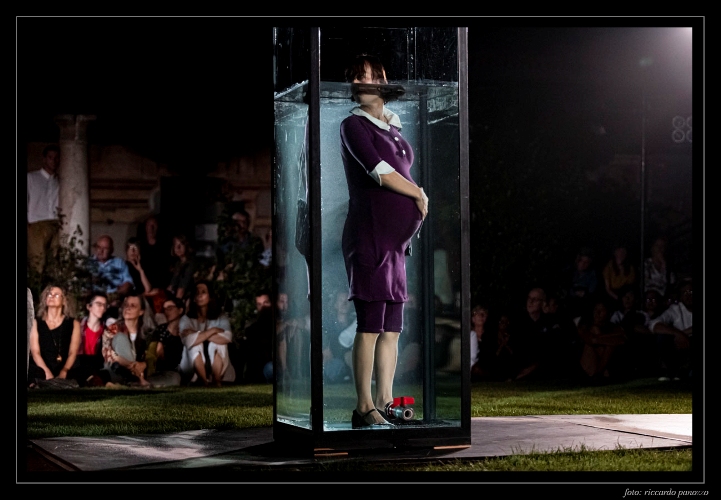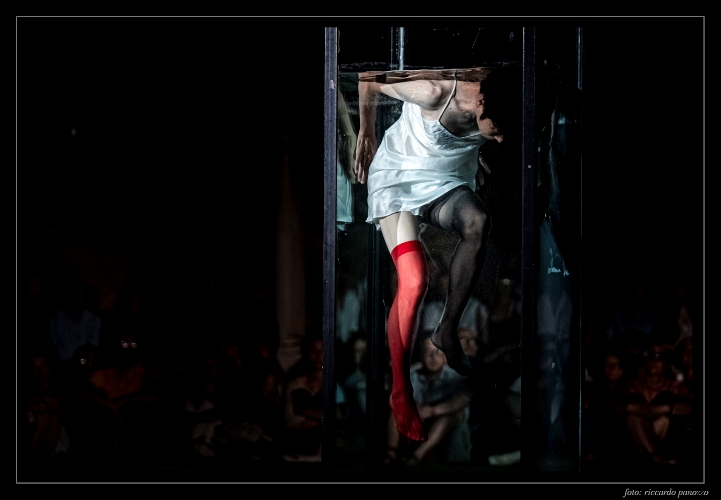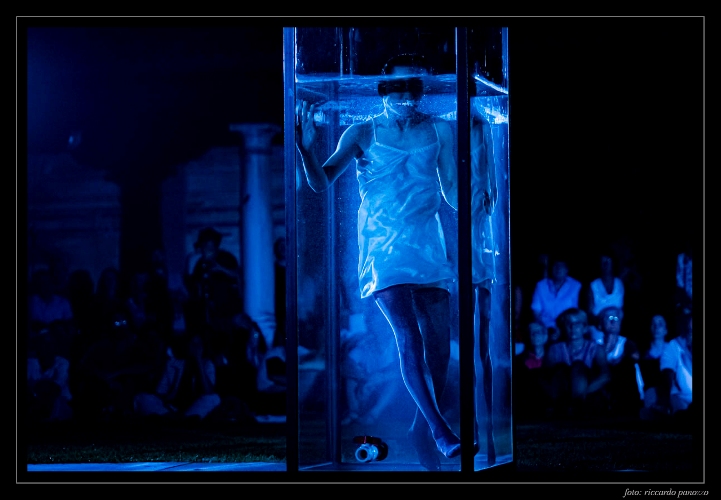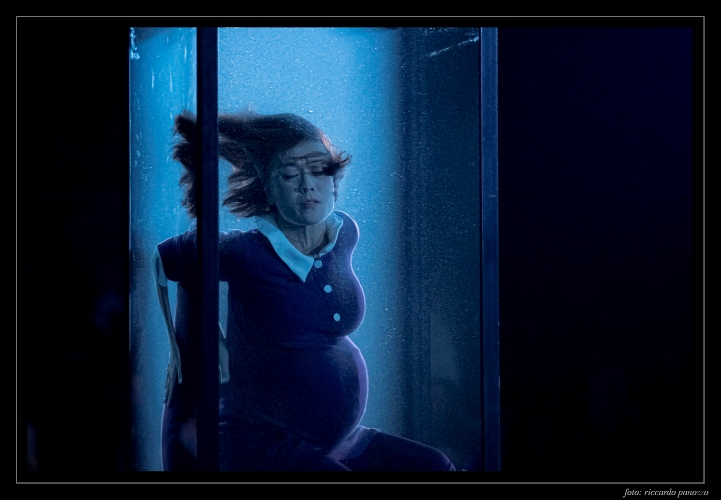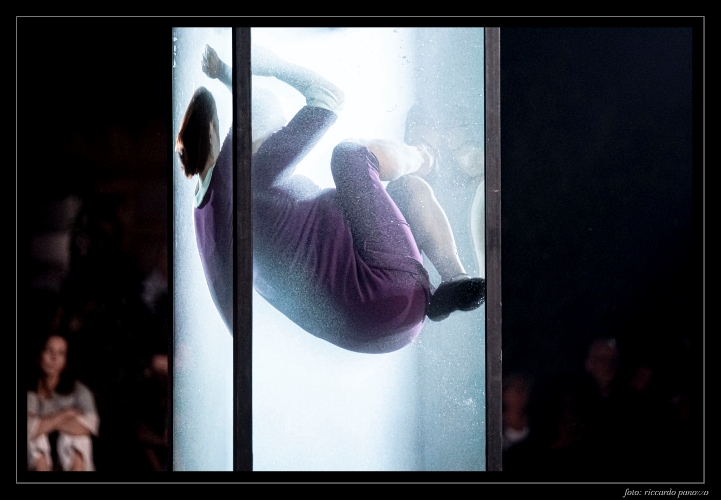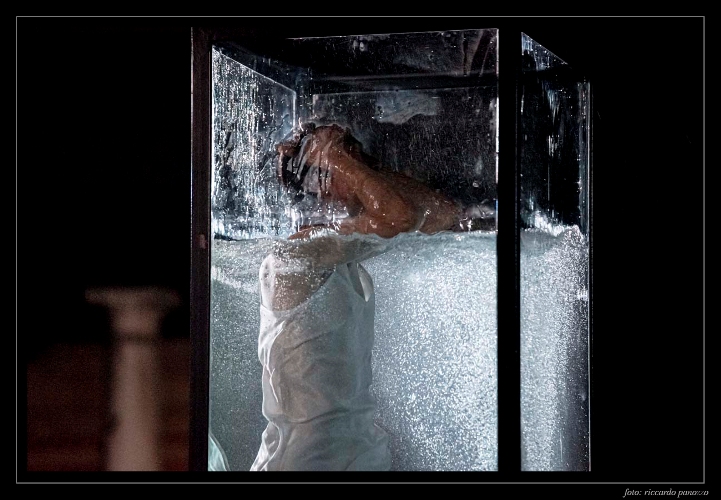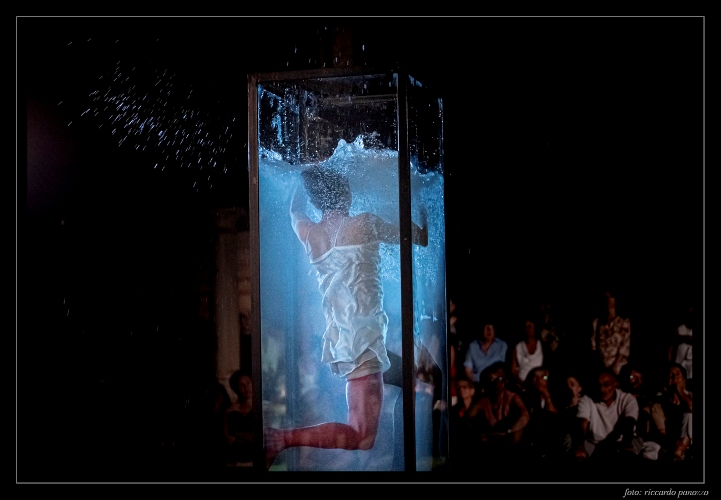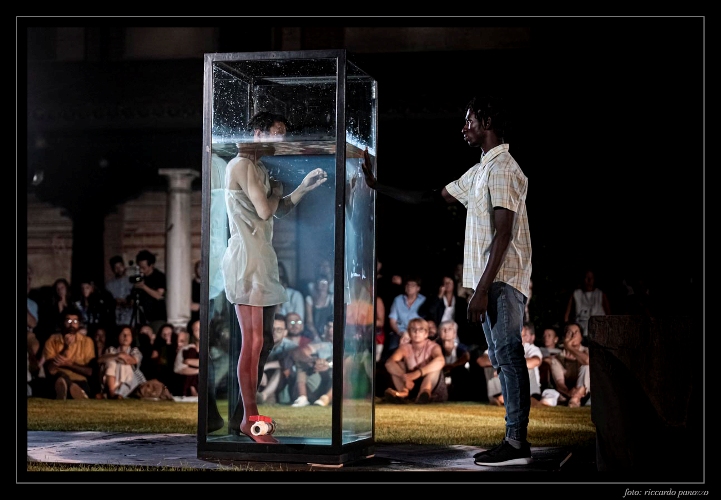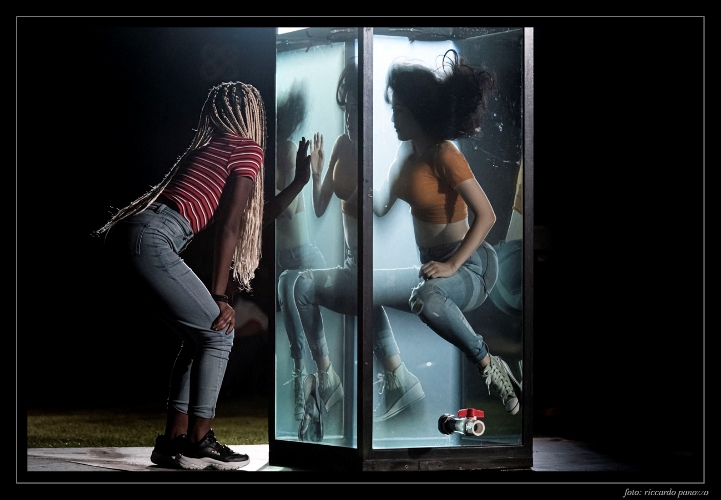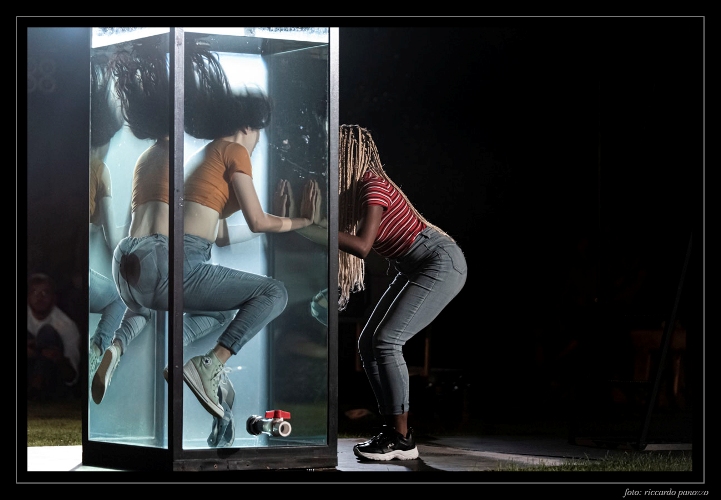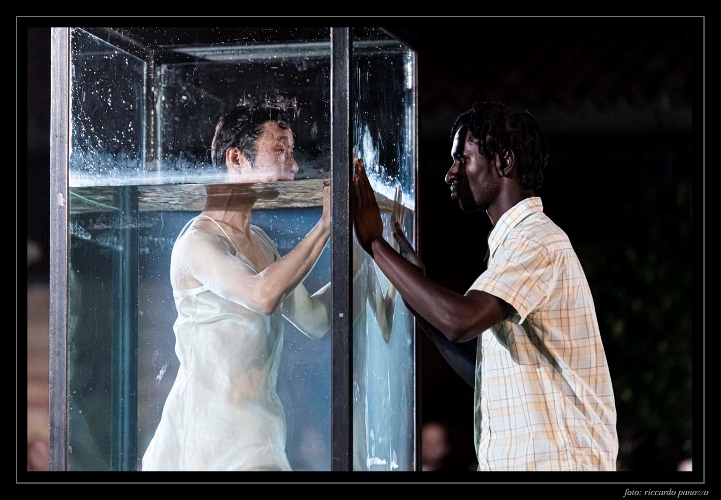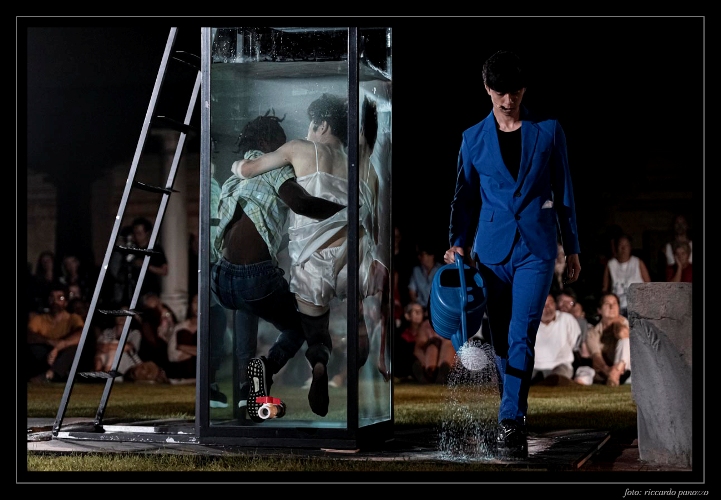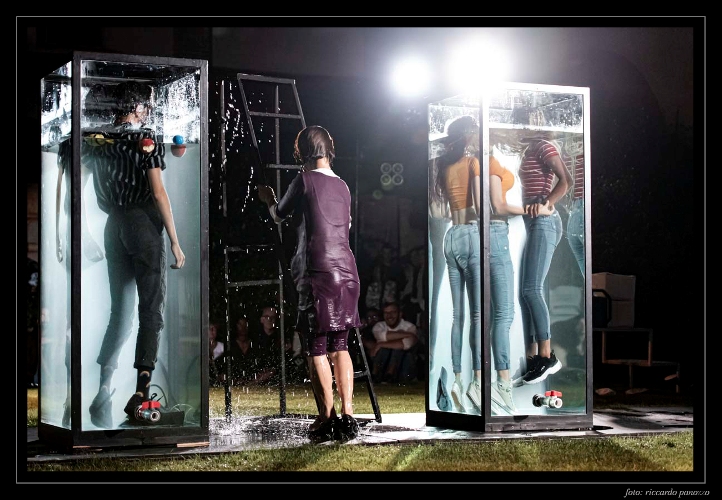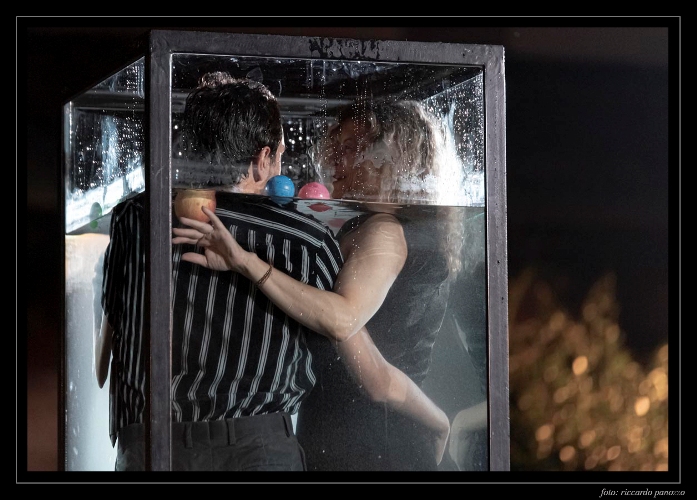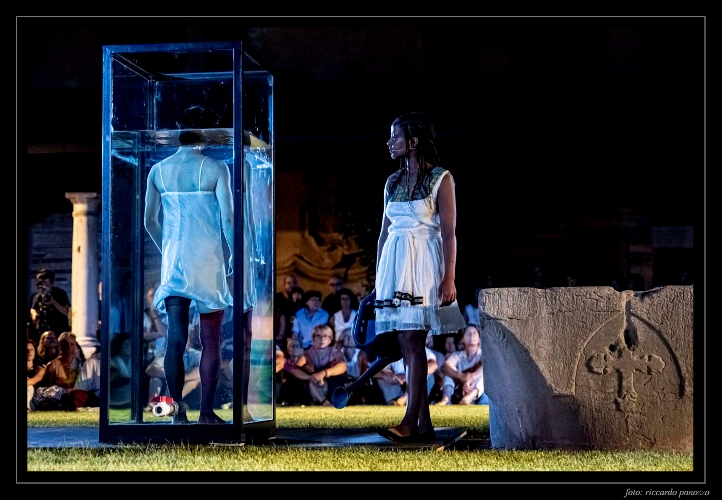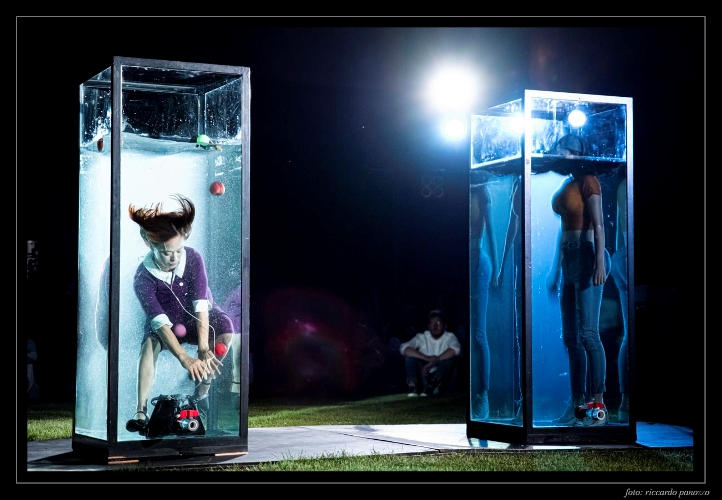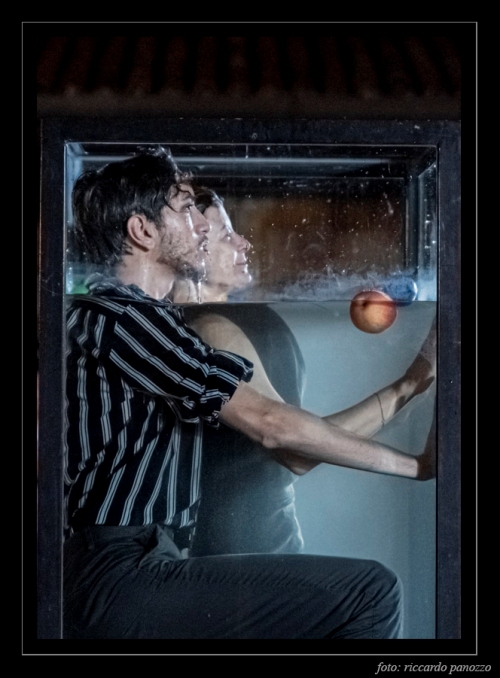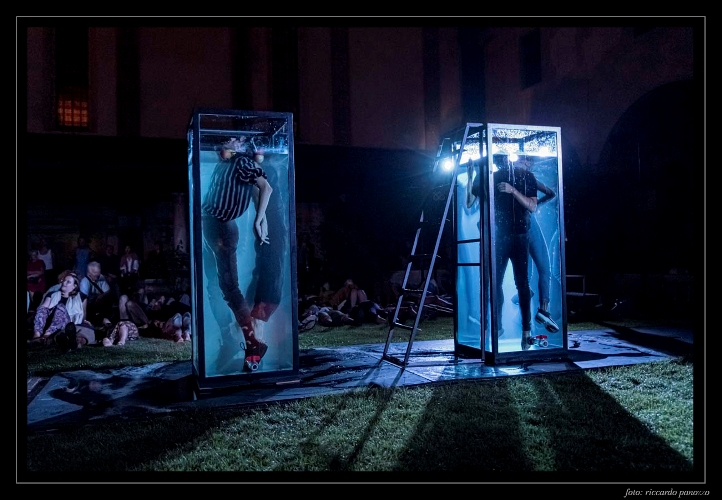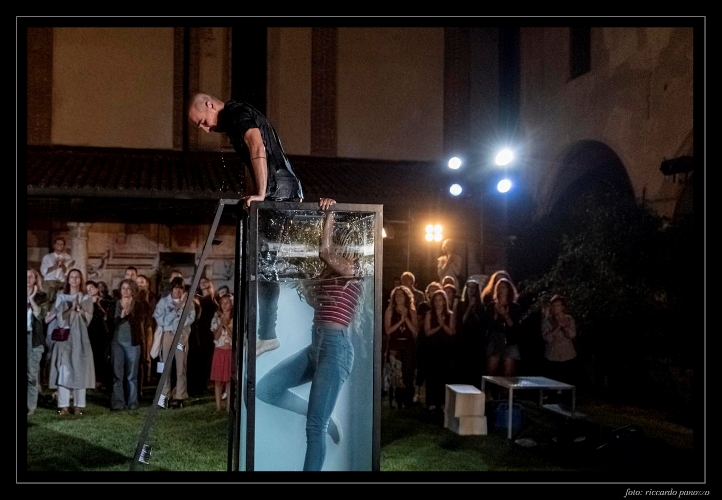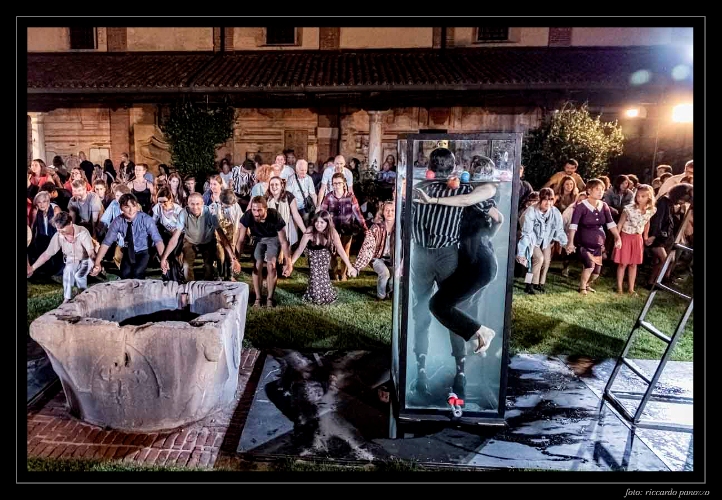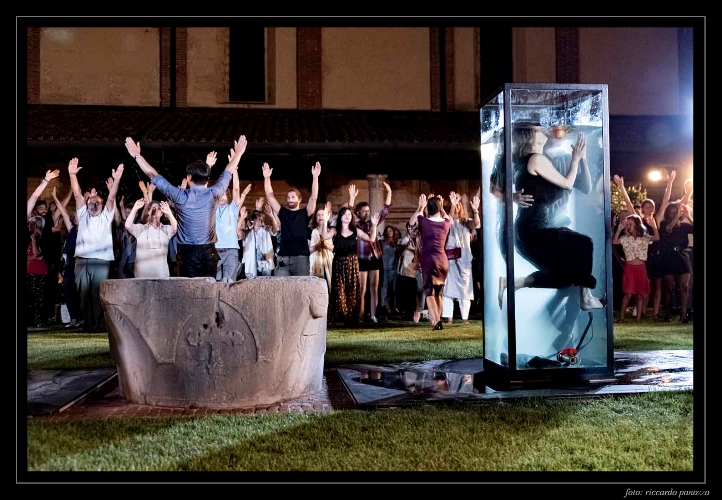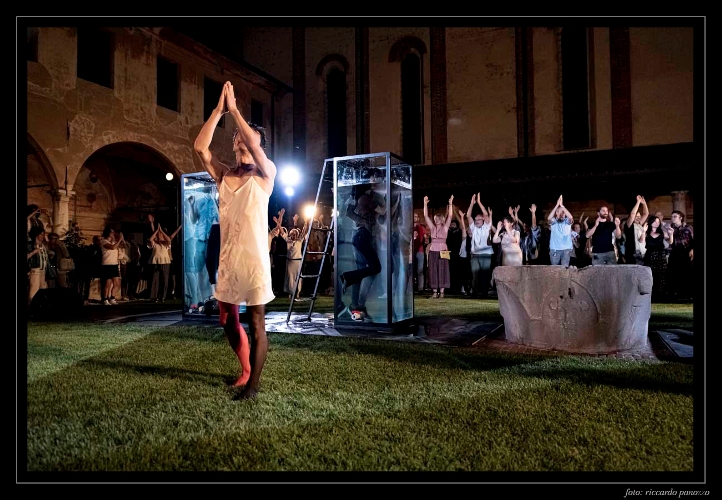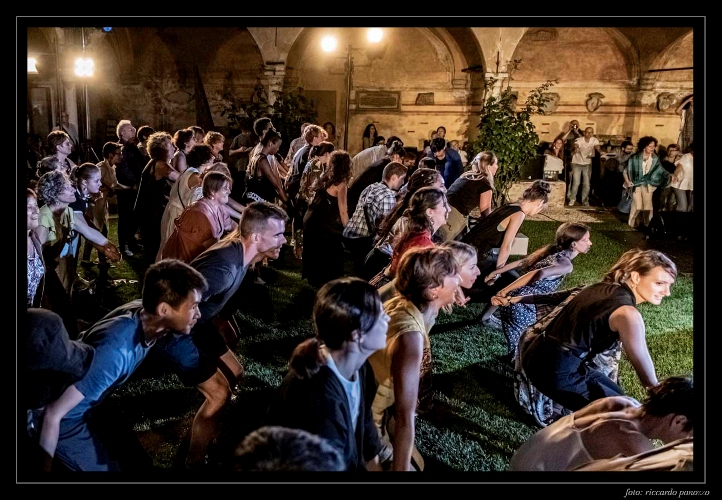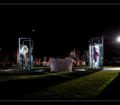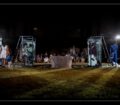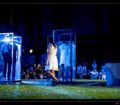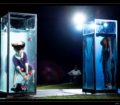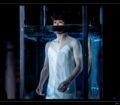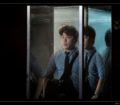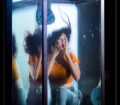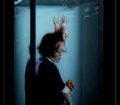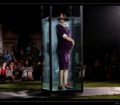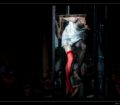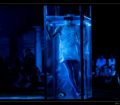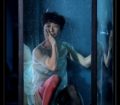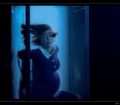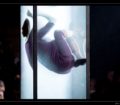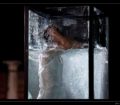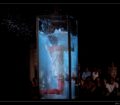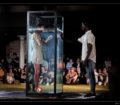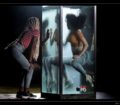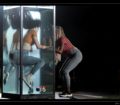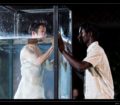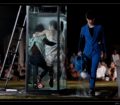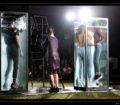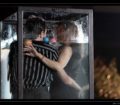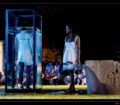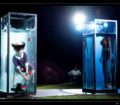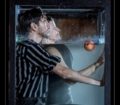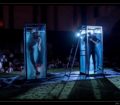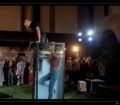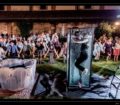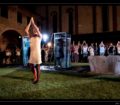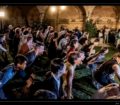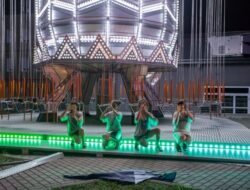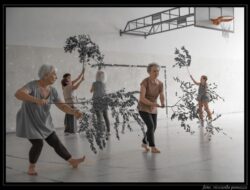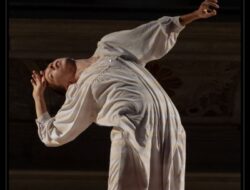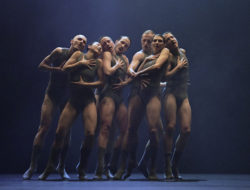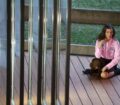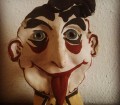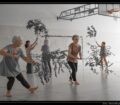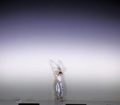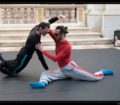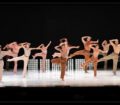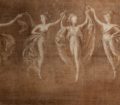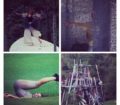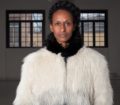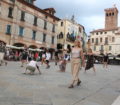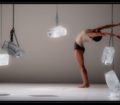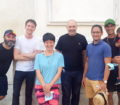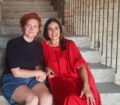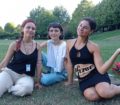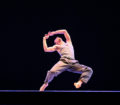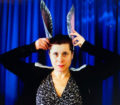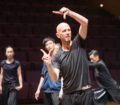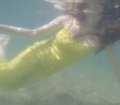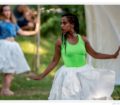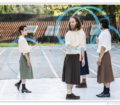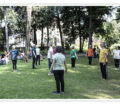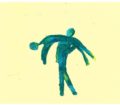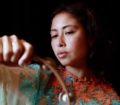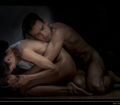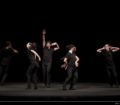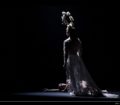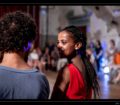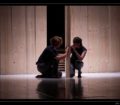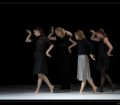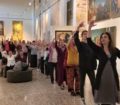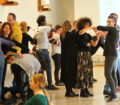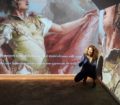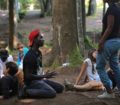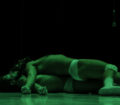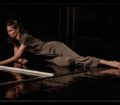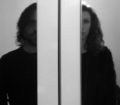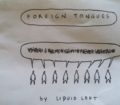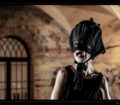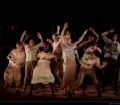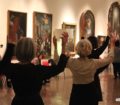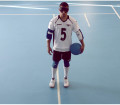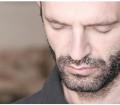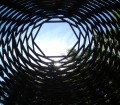ENG | Here are our review and our photo gallery of “Muljil” by the Korean company Elephants Laugh.
ITA | Ecco la recensione e la photo gallery di “Muljil” della compagnia coreana Elephants Laugh. La versione originale in italiano segue il testo inglese, dopo la photo gallery.
ENGL | A bout du souffle. Until the last breath. The performer’s bodies float motionless inside the glass cases. For a long time they remain quite still, like inert animal corpses in formaldehyde. But they are light years away from any Damien Hirst installation because they are alive, very alive. They breathe. Each inside their own container, vertical and transparent, filled almost to the brim with water. We watch them. We are sitting upon the damp night-time grass of the Museum’s cloister. We waited for them, we saw them come and enter their aqueous tanks by way of long metal stairs. We watched them submerge and become mute, distant creatures, interred by an intangible transparency.
The clothes they wear reveal a lot about who they are: a pin-up model in tight jeans and a close-fitting shirt; a pregnant woman in a purple dress, high-heels and with a black leather handbag hanging on her arm; a man en travesti with petticoat and suspenders; a businessman dressed in shirt and long trousers, carrying a laptop case over his shoulder. Four lives dissected in front of our eyes, criss-crossed by our gaze, enveloped in a geometric volume of water. Four portraits of our contemporary world and its obsessions: beauty, procreation, sexuality, work.
Then these bodies, immersed in water up to the mouth, begin to move, to animate themselves, to explore the marine world of interiority, a contained yet formidable abyss. And it is in that agitation, in that twisting and turning, in that quivering and holding of breath, in that remote and ancient apnea that embodies something original in itself, that we witness the transformation. No longer bodies but actual people; no more icy mannequins but human beings, stirred by perturbations, passions, emotions. Hair begins to swirl around the water, like algae swept by a current; faces appear distorted; body movements seem slower; clothes billow and drift down like falling petals.
In those open glassy eyes that stare at us from the water we see an exotic reflection of ourselves, both the mirrored narcissist and vanity’s withering, an echo of love as well as its severance, an evocation of security and its subsequent attenuation. Inside those glass cases we see both the micro and the macrocosm. Finally something floats up from our memory, through the pregnant woman pirouetting upside down to retrieve some apples that have escaped from her bag. An allusion to the Haenyeo: those last female divers able to hold their breath and dive at depth in order to comb the Korean seabed for molluscs and shells. The glass that encases them ensures that the audience observes them holding their breath. We witness that delicate and very fragile moment that divides a life-giving breath from its suspension, from its interruption. Its tangibility brings us closer to that secret inter-world, that mysterious veil that separates the surface of life from death’s vast sealed-off inaccessibility.
The disturbing and formally perfect show of these four underwater dancers occasionally evokes the equally disturbing and impeccable moods created by the Korean director Kim Ki-duk. Rippling against these fully-formed realistic artworks are the other performers who enter the scene and interact from the outside with those enclosed inside their watery pods. It is a search for contact that culminates with their voluntary immersion in the tanks too, together with the four dancers. It’s carried out in steps, they seek to touch and connect with backs, heads and shoulders.
The surprise for the audience comes at the end, when some of the company’s dancers emerge out of their tanks, soaked and dripping wet, smiling, invite us all to repeat some simple movements. Thus, we all find ourselves in the same boat so-to-speak, dancing and holding hands, pivoting around on our feet. Like sea waves, we tumble to the ground, lying down, holding each others’ hands and, despite ourselves, we find ourselves gazing up at the dark, adrift amongst the stars. “Even if we are separated like islands, we are all in the same sea” someone says offstage.
Then, the stage lights come back on so we recompose ourselves, and the other performers who had remained immersed in the tanks up to that point re-emerge and exit by way of the long stairs.
It is at this juncture that a connection is made with the migrant landings: in those thoughtful towels offered by stage assistants to performers, in those spontaneous applauses with which every re-emerging body is welcomed and embraced, we feel and see all the dramatic power of life which has survived death, the alighting ashore that defeats being adrift out at sea, a humanity that has finally found itself.
Anna Trevisan
English translation by Jim Sunderland
Photos: courtesy by Riccardo Panozzo
ITA | A bout du souffle. Fino all’ultimo respiro. Dentro a teche di vetro i corpi dei perfomers galleggiano immobili. Per un lungo attimo restano fermi, come cadaveri inerti di animali in formaldeide. Ma sono lontani anni luce dalle installazioni di Damien Hirst. Perché sono vivi, vivissimi. Respirano. Ognuno dentro al proprio box, verticale e trasparente, riempito di acqua quasi fino all’orlo. Noi spettatori li osserviamo. Siamo seduti sull’erba umida e notturna del chiostro del Museo. Li abbiamo aspettati, li abbiamo visti arrivare ed entrare dentro alle vasche attraverso lunghe scale di ferro. Li abbiamo guardati immergersi e diventare creature mute e lontane, sepolte da una trasparenza intangibile.
Indossano vestiti che raccontano molto di loro: una pin-up in jeans attillati e maglietta aderente; una donna incinta, con indosso un vestito viola e scarpe coi tacchi e una borsetta di pelle nera appesa al braccio, un uomo en travesti, con sottoveste femminile e giarrettiere; un uomo d’affari, in pantaloni lunghi e camicia, con il computer a tracolla. Quattro vite sezionate dai nostri sguardi, attraversate dai nostri occhi, avvolte da un blocco geometrico d’acqua. Quattro ritratti del contemporaneo e delle sue ossessioni: la bellezza, la procreazione, la sessualità, il lavoro.
Poi, questi corpi, immersi fino alla bocca nell’acqua, iniziano a muoversi, ad animarsi, ad esplorare il mondo marino dell’interiorità, il suo piccolo grande abisso. Ed è in quell’agitarsi, in quell’aggirarsi, in quello shakerare il respiro e trattenerlo, in quell’apnea remota e antica che in sé contiene qualcosa di originario, che assistiamo alla trasformazione. Non più corpi ma persone; non più algidi manichini ma esseri umani, agitati da turbamenti, passioni, emozioni. Le chiome immerse nell’acqua si sfaldano, come alghe sgranate dalla corrente; i visi si deformano; i movimenti del corpo appaiono rallentati; i vestiti si allargano e si spampanano come petali prossimi a cadere.
In quegli occhi aperti e vitrei che ci scrutano dall’acqua vediamo il riflesso esotico di noi stessi, l’eco del narciso e la sua sfioritura, l’eco dell’amore e della sua rottura, l’eco della sicurezza e il suo scomparire. Dentro a quelle teche di vetro vediamo il micro e il macrocosmo. E, nella donna incinta che piroetta a testa in giù per afferrare delle mele cadute dalla sua borsetta, finalmente vediamo l’eco delle pescatrici coreane, le Haeneo, le ultime donne sub capaci di immergersi in apnea per cacciare nei fondali marini ricci e polpi e conchiglie. Il vetro intorno a loro rende visibile al pubblico l’apnea, rende visibile quel momento delicato e fragilissimo che divide il respiro vitale dalla sua sospensione, dalla sua interruzione, ci lascia scoprire quell’intermondo segreto, quella velatura misteriosa che separa la superficie e la vita dalla morte e la sua sigillata inaccessibilità.
Lo spettacolo conturbante e formalmente perfetto di questi quattro danzatori subacquei ricorda a tratti le atmosfere altrettanto conturbanti e impeccabili del regista coreano Kim Ki Duk. A increspare questi quadri conclusi e icastici è l’ingresso in scena di altri performers che interagiscono da fuori con i danzatori chiusi nelle vasche. Una ricerca di contatto che culmina con la loro volontaria immersione nelle vasche, insieme ai danzatori, e si consuma in passi a due fatti di schiene e teste e spalle che si cercano e si toccano.
La sorpresa per il pubblico arriva alla fine, quando i danzatori della compagnia escono dalle vasche, fradici e grondanti d’acqua e, sorridendo, invitano a ripetere dei semplici movimenti. Così, ci troviamo tutti, per davvero, nello stesso mare, a danzare con le mani giunte e a girare intorno facendo perno sui piedi. Come onde del mare, cadiamo tutti a terra distesi, con le mani nelle mani degli altri e, nostro malgrado, ci ritroviamo nel buio a guardare le stelle. “Anche se siamo separati come isole, siamo tutti nello stesso mare”, recita una voce off.
Poi, le luci di scena si riaccendono, noi ci ricomponiamo, e gli altri performers rimasti fino ad allora immersi nelle vasche riemergono ed escono usando delle lunghe scale. È a quel punto che il cortocircuito con gli sbarchi dei migranti è compiuto: in quei premurosi asciugamani offerti dagli assistenti di scena ai performers, in quegli applausi spontanei con cui ogni corpo riemerso viene accolto e abbracciato, sentiamo e vediamo tutta la potenza drammatica della vita sopravvissuta alla morte, dell’approdo che ha sconfitto la deriva, dell’umanità che ha ritrovato, finalmente, se stessa.
Anna Trevisan
Photo gallery e foto di copertina: Riccardo Panozzo
Operaestate Danza, 17 luglio 2019 Chiostro del Museo Civico, Bassano del Grappa" "Muljil" by Elephants Laugh Ideazione e creazione: Jinyeob Lee Con: Geungho Nam, Hyunsung Seo, Aeri Lee, Jaiho Lee, Kijang Han Regia: Jinyeob Lee Testo: Jaeuk Shin Performers a Bassano: Sara Abdelkerim, Selamawit Biruk, Abderraouf Selmani, Lamin Suno, Victoria Okebugwu Costumi: Kyungin Kim Sound designer: Jimmy Sert Stage director: Myungsik Bai Luci: Dongseon Shin Tour manager: Bongmin Choi Producer: Jisun Park Commissionato da: Ansan Street Arts Festival, Seoul Street Arts Creation Center Con il supporto di: Arts Council Korea
Tags: #review, photo gallery, Riccardo Panozzo



